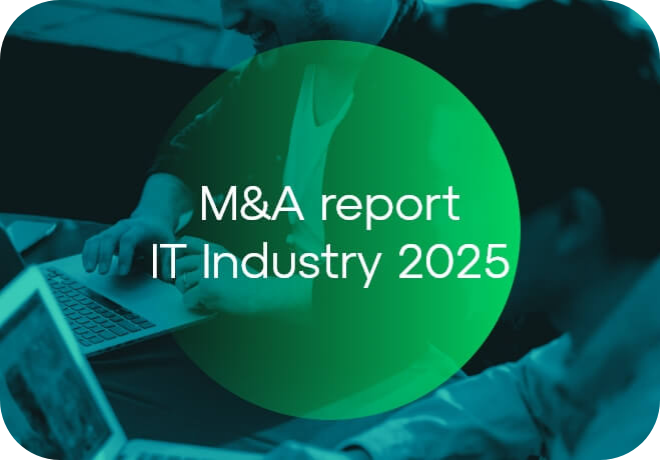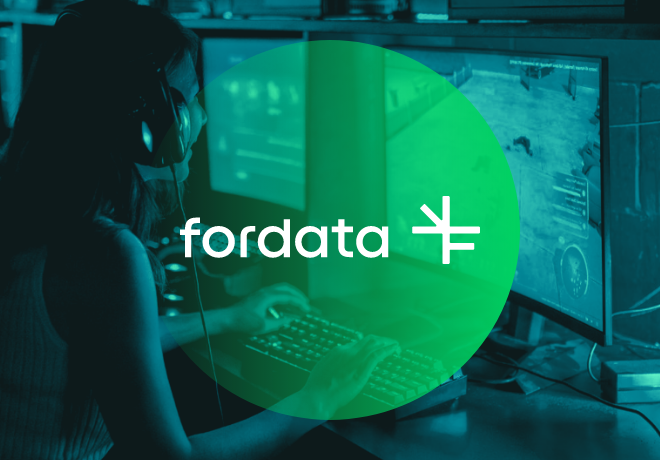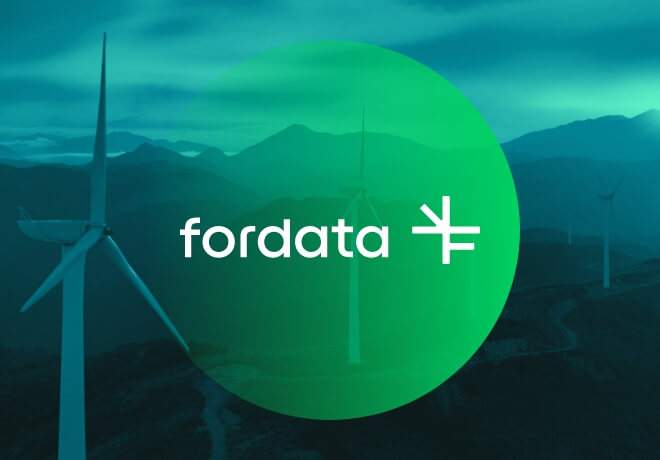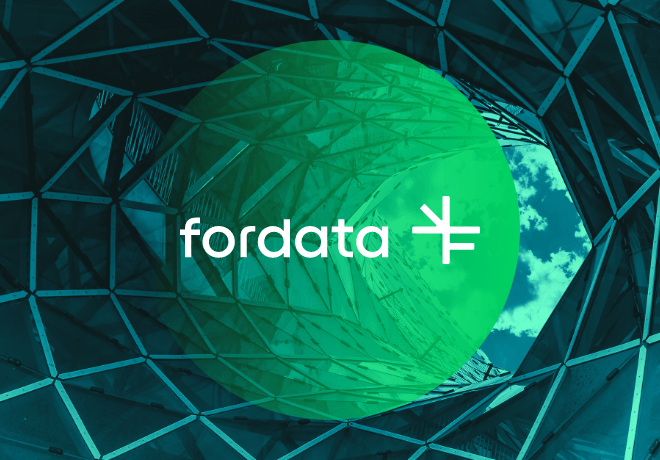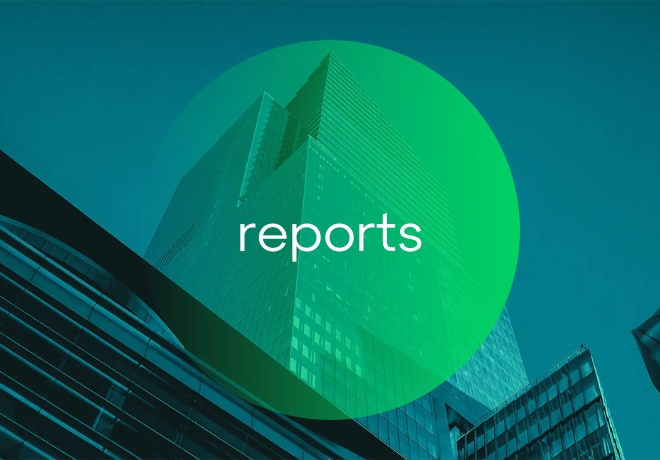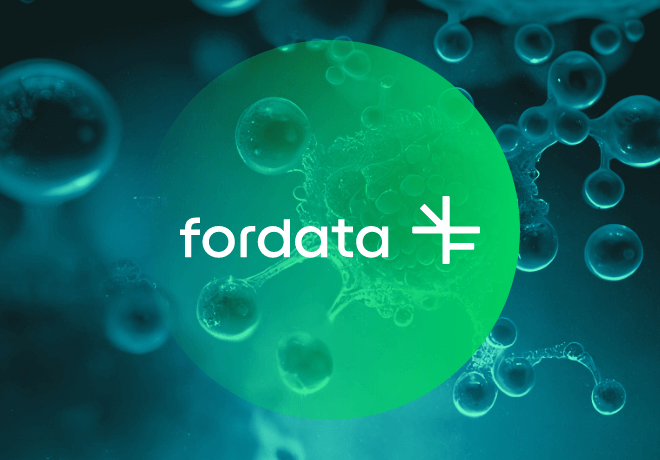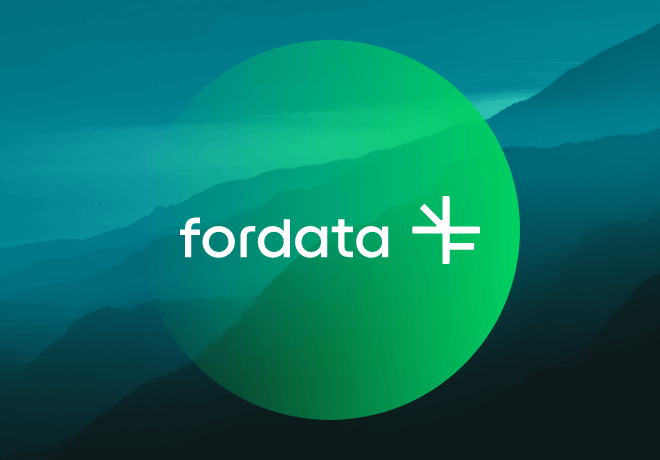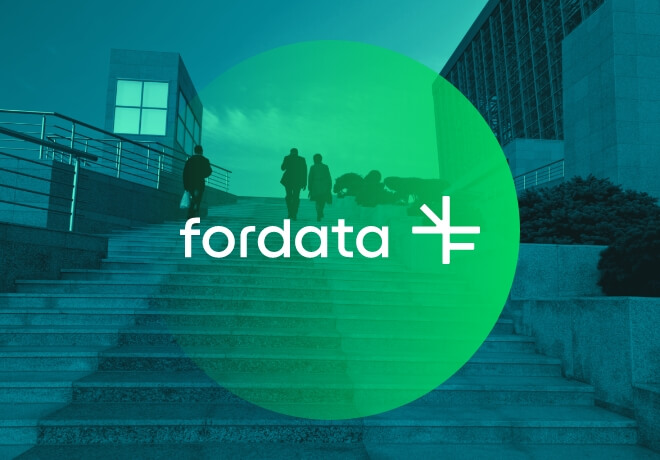18 . 07 . 2025
M&A Sell-Side vs Buy-Side M&A: How Virtual Data Room supports both sides of the transaction
18 . 07 . 2025
Mergers and acquisitions are complex processes involving two main parties: the seller and the buyer. Although their goals differ, both parties share one thing: the success of the transaction depends largely on efficient documentation management and effective communication between the participants. How does a VDR facilitate this?
Preparing and sharing hundreds of confidential files, organizing the work of advisors, maintaining compliance with regulations, and controlling who and when accessed specific data are just some of the challenges faced by transaction teams on both sides.
This is where the Virtual Data Room comes into play – a secure online environment that allows not only storing and sharing documents, but also managing access, tracking user activity and collaborating between teams in real time.
A good quality VDR is an essential tool that can determine the efficiency of the entire transaction.
In this article, we demonstrate how VDRs support both sellers and buyers by addressing their specific needs and mitigating common risks. We’ll also explore features worth considering when choosing a solution and analyze practical examples where VDR implementation has translated into real business benefits.
Differences between Sell-Side and Buy-Side in the M&A Process
Who are the parties to the transaction?
- A sell-side agent typically involves the company owner, a private equity fund, company management, or advisors representing the entity being sold. Their goal is to efficiently and profitably sell the company, usually within a clearly defined timeframe.
- Buy-Sides are investors, corporations, investment funds, or financial institutions seeking growth or consolidation opportunities through acquisitions. Their role is to conduct a thorough analysis of the investment target, including thorough Due Diligence, to minimize risk and confirm the purchase’s validity.
Different goals, different challenges
For the selling side, the key factors are:
- preparation of complete, transparent and up-to-date documentation
- maintaining control over what is shared and with whom
- reducing the risk of information leakage or loss of value in the event of a transaction failure
- time management, as too long processes may reduce the attractiveness of the offer or discourage investors.
In turn, the buying party needs:
- quick access to reliable data
- tools enabling collaboration between analysts, lawyers and advisors
- clear tracking of changes in documentation
- support for compliance and risk analysis
The process from the perspective of both parties
| Stage | Sell-side | Buy-side |
|---|---|---|
| Preparation | Document selection, folder structure, NDA | Analytic team, building an acquisition strategy |
| Data sharing | Setting permissions, access control | Financial, legal, operational, ESG analysis |
| Due Diligence | Monitoring activity, answering questions | Risk assessment, contact with advisors, final report |
| Negotiations and finalization | Contract arrangements, tax optimization | Valuation, securing the buyer's interests |
Although the point of contact is the Virtual Data Room, each party uses it for a completely different purpose. A good VDR should enable these goals to be achieved simultaneously and without compromise, ensuring a balance of information, transparency, and security.
In the following sections, we will discuss exactly how this works in practice, separately for sellers and buyers.
How does VDR support Sell-Side?
For the seller, every M&A transaction represents not only an opportunity for a profitable capital exit but also a serious commitment to efficient process management, risk mitigation, and the protection of sensitive information. A VDR is a tool that enables these goals to be achieved with greater control, speed, and transparency.
Centralization and document preparation
A VDR allows to structure transaction documentation in one easy-to-access place. Files can be grouped into logical folders (e.g. financial, legal, HR), making it easier for potential investors to understand the company. Importantly, platforms like Fordata allow you to prepare a closed data room in advance (so-called pre-DD, ready to launch at any time).
Access and permission management
One of the most important functions of a VDR is precise control over who has access to which documents. Users can be granted various levels of permissions, from full access to limited access to selected files, with no download or printing options. This is especially important at the beginning of acquisition processes, when multiple investors are analyzing the company simultaneously.
Control over the duration of Due Diligence
With automated document sharing and rapid response to investor questions, sellers can better manage the pace of the process. Instead of responding to each potential buyer individually, the administrator has complete visibility into what has already been shared and any recurring questions. This shortens the response time.
Reducing the risk of data leakage
High levels of VDR security, such as document watermarking, data encryption, and copy blocking, significantly reduce the risk of unauthorized disclosure of sensitive information. If a potential investor withdraws their interest, the administrator can immediately revoke access without having to physically retrieve the documents.
Automatic activity logs for greater transparency
Every user action in the VDR, such as downloads, openings, or comments, is recorded and available in reports. This allows the sell-side team to monitor which documents generate the most investor interest and which are not opened at all. This type of data allows them to better assess real engagement and prepare for further stages of negotiations.
VDR Features That Optimize the Entire M&A Process
Regardless of whether we’re talking about the seller or buyer, the effectiveness of the M&A process largely depends on the quality of the tool that supports document management, communication, and data security. A quality Virtual Data Room not only organizes files but also actively supports transaction participants at every stage, from preparation to finalization.
Below, we discuss features worth considering when choosing a solution.
Data security and encryption
Data security is the foundation of every VDR. Solutions like Fordata offer document encryption during transmission and storage, bank-grade security, and features such as:
- document watermarking (dynamic, user-assigned)
- access restrictions (e.g. no download, copy, or print options)
- immediate account blocking if necessary
- two-factor authentication
This ensures that even when analyzed by multiple investors at the same time, the information remains fully controlled.
Data redaction module (also with AI support)
For documents containing personal data, confidential information, or trade secrets, redaction is essential. Frodata’s VDR offers an AI-based automated data redaction feature that can detect and mask specific types of information (names, tax identification numbers, sensitive clauses). This accelerates documentation preparation and reduces the risk of disclosing confidential data.
AI document translation capabilities
Cross-border transactions often require rapid document translation. Selected VDRs, including Fordata, now integrate AI modules for automatic translation, allowing teams in different countries to work on the same dataset without having to outsource translations. This translates into smoother collaboration and faster response times.
24/7 availability and ease of scalability
Multiple users, varying time zones, and tight schedules are the daily reality of M&A processes. VDR runs online, without installation, and is accessible 24/7 from anywhere in the world. Furthermore, well-designed platforms scale easily, allowing you to add new users, expand your folder structure, or manage multiple parallel projects without sacrificing performance.
Case study: how VDR translates into transaction efficiency
In the sale of Novago, one of the largest waste processing companies in Poland, the use of a Virtual Data Room played a key role in organizing and securing the M&A process. The buyer was China Everbright International, and the transaction was one of the largest investments by Chinese capital in Poland and one of the largest acquisitions in the environmental protection sector in Central and Eastern Europe.
The challenge was to securely share hundreds of documents with over 120 advisors working on both sides, located in Europe and Asia. Thanks to the Fordata VDR platform, the due diligence process was streamlined and fully centralized:
- documents were divided into logical areas (finance, taxes, environment, HR) and access to them was assigned selectively, depending on the user’s role
- advanced security features include watermarking, download restrictions, and logging of all activity
- the seller’s team had insight into which files generated the most interest, allowing them to prepare responses more quickly and drive the transaction narrative
- the entire process was handled remotely 24/7, without the need to organize physical meetings or send documents traditionally
The result? Due Diligence completion time was reduced by nearly 40% compared to previous, comparable processes. VDR not only streamlined the process but also raised the standard of cooperation between the parties and built trust in the quality of transaction preparation.
Summary: VDR Benefits for Buy-Side and Sell-Side Participants
In M&A transactions, not only the subject of the process is crucial, but also how it is conducted. Modern transactions require precision, transparency, speed, and the highest standards of information security. In this context, a VDR becomes not only a technological tool but also a balance of power between the parties.
For sellers, it’s a tool that allows them to organize documentation, control access, build trust, and shorten the process. For buyers, it’s a source of knowledge, a space for analysis, and a platform for organizing teamwork. And for both parties? It’s the foundation on which to safely and effectively finalize a transaction.
Want to learn how VDR works in practice?
Contact us to book a demo session and see how Fordata VDR can support your transaction step by step.
Did you like the article?

I draw energy to act from all kinds of outdoor activities - forest runs, or conquering mountain peaks. My favorite region? Central and Eastern Europe! Linking business relations with collecting interesting facts about CEE economy and culture is my thing. I share my travel experiences and expert knowledge in the #FORDATACafe video cycle.
Do you want to exchange knowledge or ask a question?
Write to me : Piotr Miszczyk page opens in new window
Optimizing Sell-Side and Buy-Side M&A in VDR
TEST FREE TEST FREE-
01 . What is the Merger and Acquisition process step by step?

Learn about the key stages of the M&A process: analysis, Due Diligence, negotiation, integration, and the role of VDRs in streamlining M&A transactions.
12.12.2025
-
02 . Merger and acquisition of a company - what are the differences between these processes?

What’s the difference between a merger and an acquisition? Learn about the key differences and the benefits that mergers and acquisitions bring to companies in the marketplace.
12.11.2025
-
03 . Due Diligence in M&A: Key Legal Aspects That Determine the Fate of the Transaction

Learn the most important aspects of legal Due Diligence in M&A. What should you pay attention to to ensure the transaction goes according to plan?
20.08.2025
-
04 . Virtual safe that decides the fate of the transaction – VDR in M&A

Are you preparing an M&A deal? Learn best practices for the Due Diligence process in VDR.
16.07.2025
-
05 . The Role of AI and Automation in M&A Virtual Data Rooms

Explore how AI and automation have enhanced Virtual Data Rooms to transform Due Diligence and M&A.
18.04.2025
-
06 . M&A Deals and Virtual Data Rooms: Why Are They a Perfect Match?

The role of Virtual Data Rooms in M&A deals is pivotal for transaction success. How can a deal be streamlined with the use of VDR?
16.04.2025
-
07 . Understanding Virtual Data Rooms: Key Features and Benefits

What features to look for in a Virtual Data Room and what benefits do they bring? Secure online Due Diligence is here.
03.04.2025
-
08 . Business, Secure File Sharing, and Virtual Data Rooms - The perfect combination

Learn why Virtual Data Room is the perfect tool for secure file transfer in a business environment. Protect sensitive information of your company.
26.03.2025
-
09 . What Is a Virtual Data Room (VDR) and How Does It Work?

VDRs removed the limitations of traditional data rooms, offering a secure online space where confidential data can be accessed by authorized users from anywhere in the world.
10.03.2025
-
10 . How does a VDR help minimise risk and increase transaction value in the TMT sector?

The TMT industry is constantly subject to M&A processes. Learn how VDR helps minimize risk and increase transaction value in the TMT sector. Discover the benefits and challenges of using it in M&A processes.
09.12.2024
-
11 . Bolt-on - the ‘buy and build’ strategy

Bolt-on, the process of acquiring a smaller company, is one of the popular strategies used by large corporations, private equity investors and venture capital funds.
25.11.2024
-
12 . The formula for a successful M&A process

A successful M&A process is the result of a synergy of many components. Successfully executing a merger or acquisition can be the key to gaining a competitive advantage and even surviving in the market.
19.08.2024
-
13 . How can VDR support the growth of the renewable energy industry in 2024?

In 2024, the renewable energy industry faces new opportunities and challenges. Thanks to financial support programs such as FENX.02.02, the sector of renewable energy sources has a chance for dynamic development.
02.05.2024
-
14 . DACH M&A in 2024 - will the rising wave return?

Explore how dealmakers in the DACH region continue to leverage M&A as a strategic tool amidst evolving business landscapes, including the impact of AI and sustainability. What does 2024 hold for this dynamic market?
03.04.2024
-
15 . Trends in M&A market in CEE in 2024 through the eyes of buyers

Market sentiment in Central and Eastern Europe (CEE) M&A market in 2024: a blend of cautious optimism, enthusiasm, and significant risk aversion.
08.03.2024
-
16 . The Shifting Landscape of Gaming M&A: A Tale of Investments, Acquisitions, and Emerging Trends

The trajectory of the gaming industry’s investment landscape has been anything but predictable. Q1 2023, marked by a cooling-off period from the frenetic growth during the Covid-boom, saw investments dip significantly.
15.09.2023
-
17 . M&A Landscape in the Middle East: Navigating Challenges and Seizing Opportunities

The Middle East has long been recognized as a dynamic and transformative region, and its M&A sector is no exception.
11.08.2023
-
18 . Energy industry 2023: Virtual Data Room in M&A transactions

The situation in the energy industry in Poland and Central and Eastern Europe is rapidly changing. What do investments in renewable energy look like?
06.06.2023
-
19 . VDR in due diligence process

M&As are a permanent element of the economic world. Their goal is to achieve strategic and financial benefits by expanding markets, diversifying products and production processes.
27.05.2023
-
20 . Outlook for 2023 for M&A transactions in Scandinavia

The Nordic countries are considered stable and developed markets with strong economies. What key trends will drive the Nordic M&A market?
27.04.2023
-
21 . What do M&A deals look like in 2022?

What does influence M&A deals in 2022 besides the war? We analyze the factors that shape the global mergers and acquisitions market.
28.06.2022
-
22 . The role of the CFO in mergers and acquisitions - has it changed?

Financial directors have faced the big challenge of managing company’s funds in the uncertain reality caused by the coronavirus …
22.03.2021
-
23 . The post-pandemic outlook on M&A in the Baltic States

Like the entire M&A market, in the first half of 2020, the Baltic region was marked by lockdowns, which had a number of…
25.02.2021
-
24 . What are the benefits of the FORDATA system in M&A processes?

Global opportunities for mergers and acquisitions are expected to remain firm after the initial lockdown, as pointed out by PwC, but the new and the ongoing transactions will have to adapt to the new circumstances.
15.09.2020
-
25 . The post-pandemic outlook on M&A in Czech Republic and Poland

Coronavirus did stir up trouble for practically entire economies in Czech Republic and Poland. In general, companies…
03.07.2020
-
26 . M&A in the age of coronavirus - market at a turning point

The situation on the Polish mergers and acquisitions market today resembles a controlled lottery. Some investors and entities are withdrawing or suspending operations waiting for stabilization
29.04.2020
-
27 . CEE countries stay firm as global economy bears down

In the face of economic downturn all around, also in Europe, countries in the CEE region are expected to keep growing, especially…
16.12.2019
-
28 . Due Diligence stages - selling your business step by step

Every good investment decision is based on sound knowledge about a given company and transaction process. This applies…
25.06.2019
-
29 . Due Diligence - what exactly does it include?

What does Due Diligence investigation consist of? Who performs it? What are its types? Find the answers to these and other questions on FORDATA blog!
18.06.2019
-
30 . Vendor Due Diligence - the Value of Negotiation Preparation

Vendor Due Diligence (VDD) is carried out only for the needs of the seller, which means that it takes place earlier than Due Diligence (DD).
09.11.2015
-
31 . How can we help you with Due Diligence?

Time plays a major role in M&A transactions. Even the smallest improvement that saves time needed to prepare and perform Due Diligence…
10.03.2014

